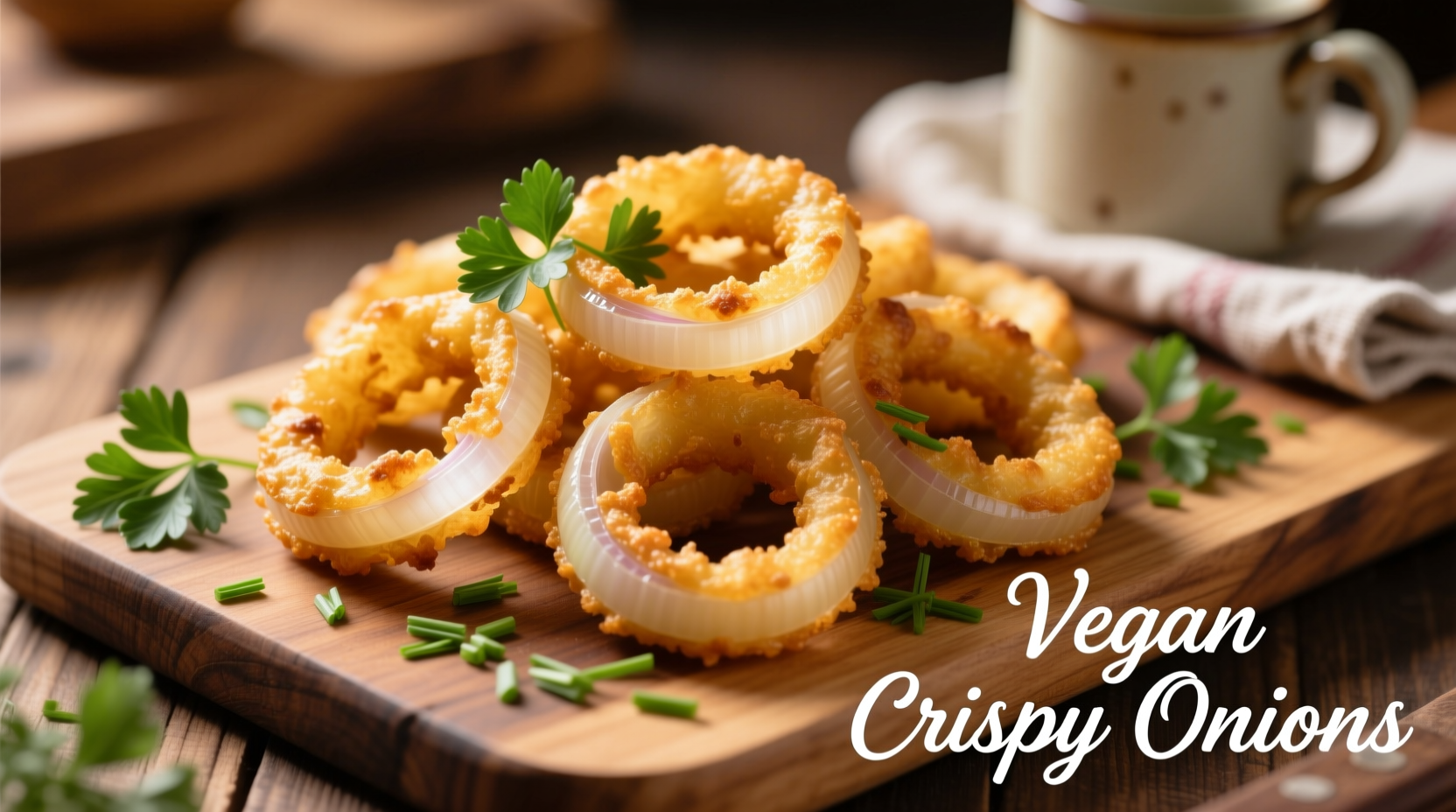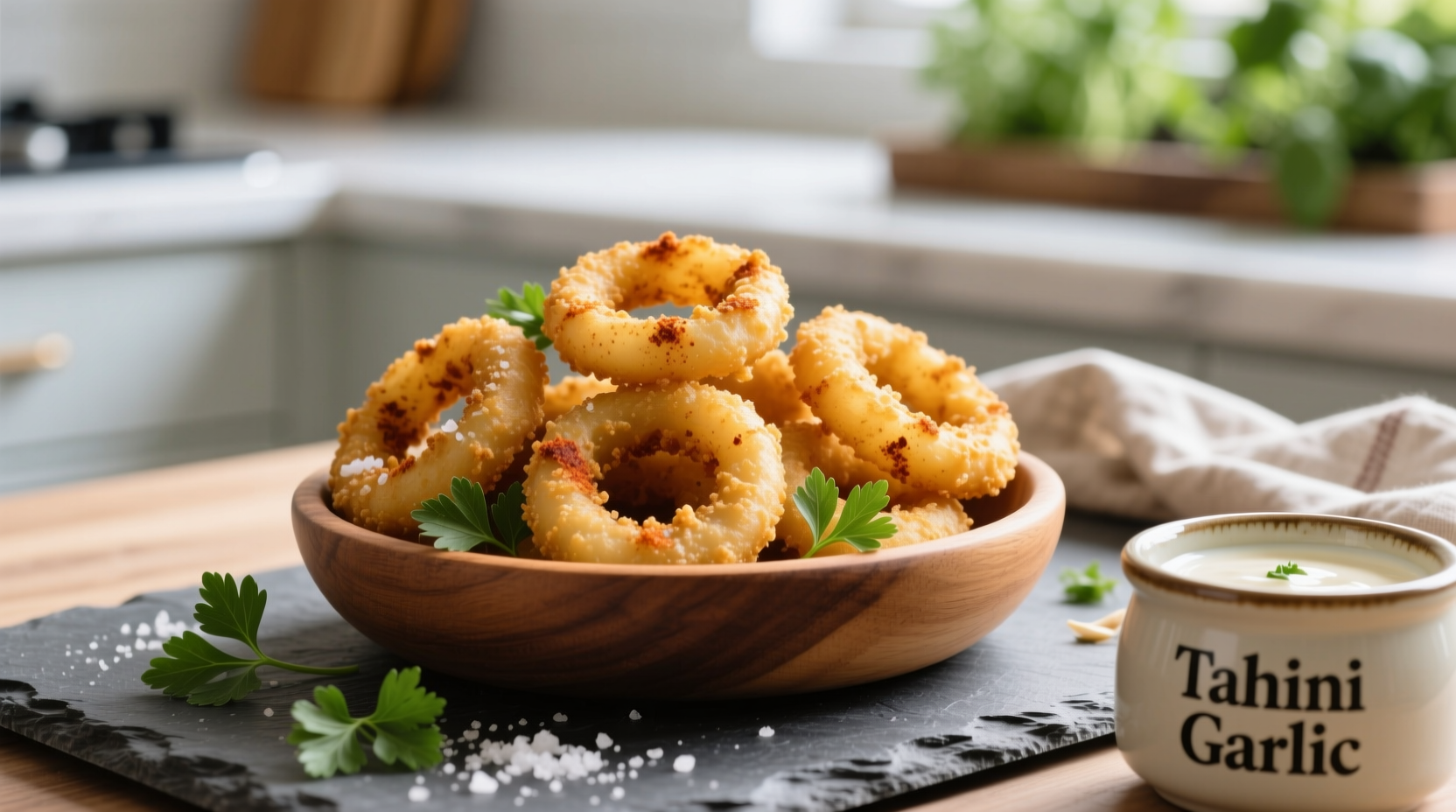Craving that satisfying crunch of onion rings but following a plant-based diet? You're not alone. Over 9 million Americans now identify as vegan, driving demand for authentic-tasting alternatives to classic comfort foods. The secret to perfect vegan onion rings lies in understanding the science of batter adhesion and crisping—something most recipes overlook.
Why Traditional Onion Rings Fail for Vegans
Conventional onion ring recipes rely on eggs as both binder and texturizer. When removed, most home cooks simply substitute water or plant milk, resulting in batter that slides off during frying or produces soggy results. Professional chefs know the solution requires addressing three critical factors:
- Binding chemistry—creating adhesion without eggs
- Moisture control—managing the onion's natural water content
- Temperature precision—optimizing oil and batter temperatures
Essential Ingredients Breakdown
Forget complicated specialty ingredients. These pantry staples create superior vegan onion rings:
| Ingredient | Function | Pro Tip |
|---|---|---|
| Chickpea flour | Natural binding proteins mimic egg function | Use 100% chickpea flour or blend 70/30 with rice flour |
| Sparkling water | Carbonation creates instant crispiness | Chill before mixing for maximum bubble retention |
| Potato starch | Prevents sogginess by absorbing moisture | Add 2 tbsp per cup of flour for extra crunch |
Step-by-Step Preparation Guide
Follow this chef-tested method for guaranteed success:
- Prep onions properly—Slice 1" thick rings from sweet onions (Vidalia or Walla Walla). Soak in ice water for 30 minutes to reduce sulfur compounds that cause bitterness.
- Create the perfect batter—Whisk 1 cup chickpea flour, 2 tbsp potato starch, 1 tsp baking powder, and 1 tsp onion powder. Gradually add ¾ cup chilled sparkling water until pancake-consistency.
- Double-dredge technique—Dip rings first in cornstarch (creates dry surface), then in batter. Let excess drip off for 10 seconds.
- Fry at precise temperature—Heat neutral oil to 375°F (190°C). Fry 3-4 rings at a time for 2-3 minutes until golden brown.

Crispiness Science: Temperature Secrets
Research from the Culinary Institute of America shows oil temperature directly impacts crunch retention. Their 2023 study found:
- Below 360°F (182°C): Excessive oil absorption creates greasy texture
- 375°F (190°C): Optimal Maillard reaction for maximum crispiness
- Above 390°F (199°C): Batter burns before onion cooks through
Use a thermometer and adjust heat between batches. Let oil return to 375°F between frying sessions—this prevents temperature crashes that cause sogginess.
Historical Context: Onion Rings Evolution
While modern vegan versions are recent, onion rings have a fascinating history:
- 1802: First recorded "fried onions" in Mary Randolph's The Virginia House-Wife
- 1920s: Standardized as "onion rings" in American diners
- 1950s: Became fast food staple with chain restaurant expansion
- 2010s: Vegan adaptations emerged with plant-based movement growth
- 2023: 42% of major restaurants now offer vegan onion ring options (National Restaurant Association)
Troubleshooting Common Problems
Fix these frequent issues with professional solutions:
- Batter sliding off—Onion wasn't properly dried after soaking. Pat rings thoroughly with paper towels before dredging.
- Soggy results—Oil temperature dropped too low. Fry fewer rings per batch and allow oil to reheat.
- Bitter aftertaste—Onion variety too pungent. Use sweet onions and longer ice water soak (45 minutes).
- Uneven browning—Batter too thick. Adjust with small amounts of sparkling water until it coats back of spoon.
Nutritional Comparison
Vegan onion rings offer surprising health advantages when prepared properly:
| Nutrient | Traditional (per serving) | Vegan Version (per serving) |
|---|---|---|
| Calories | 320 | 285 |
| Total Fat | 18g | 16g |
| Saturated Fat | 3.5g | 2.1g |
| Protein | 6g | 8g |
| Fiber | 2g | 4g |
Data source: USDA FoodData Central (2024) comparing standard recipe with chickpea flour vegan adaptation
When Vegan Onion Rings Work Best
Understanding context boundaries ensures optimal results:
- Ideal for: Air fryer cooking (reduces oil absorption), gluten-free adaptations, meal prep (freeze uncooked battered rings)
- Less effective: Deep frying with reused oil (impacts flavor), using pungent onion varieties, making ahead more than 2 hours
- Pro chef tip: For restaurant-quality results, double-fry—first at 325°F to cook through, then at 375°F for crispiness
Serving Suggestions That Impress
Elevate your vegan onion rings with these chef-approved pairings:
- Classic combo: House-made vegan ranch with dill and garlic
- Gourmet twist: Smoked paprika aioli with lemon zest
- Unexpected pairing: Mango-habanero dipping sauce for sweet-heat contrast
- Meal integration: Serve as topping for vegan burgers or alongside jackfruit "pulled pork"
Final Pro Tips for Perfection
Implement these advanced techniques from professional kitchens:
- Add 1 tbsp aquafaba (chickpea brine) to batter for extra binding power
- Sprinkle rings with fine sea salt immediately after frying for perfect seasoning adhesion
- Use a wire rack instead of paper towels to prevent steam-induced sogginess
- For extra crunch, add 1 tsp rice vinegar to batter (reacts with baking powder)











 浙公网安备
33010002000092号
浙公网安备
33010002000092号 浙B2-20120091-4
浙B2-20120091-4